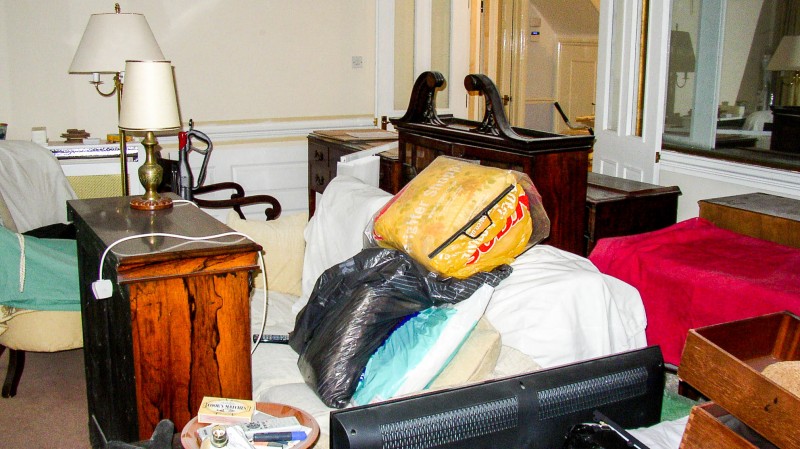You are here: How to use contrasting styles in a small space
Conventional wisdom would suggest that you keep things simple in small spaces. If you are living in a studio flat or small house, having too many colours and textures can quickly make things feel cluttered – and that’s before you consider your furniture.
Or can it?

Breaking convention
Over at Apartment Therapy, Nancy Mitchell writes that selective use of dark colours, on a single wall or a large piece of furniture, can actually make a small space feel larger if it contrasts with its surroundings. “Dark colours,” she writes, “read as receding from the viewer, so the accent wall visually enlarges the space (and sets up a nice contrast that can make the rest of the space seem brighter by comparison).”
There’s a great example of this theory in practice at Lush Home. Scroll down to the ‘Visual guide’ to see what effect painting a room with different amounts of the same strongly contrasting paint has on its apparent size.
Ideal Home has another idea that will be particularly applicable to studio dwellers, where a kitchen area or entryway are accessed through an arch, rather than a door. Keeping the same colour on the walls throughout, but ‘adding accents on architectural points of interest, such as archways’ helps define the neighbouring spaces without making the space feel cluttered.
Contrasts with purpose
Visual contrasts can have a practical use, too – particularly where several people have to share a small space. Hypebeast teamed up with Ikea to explore how contrasting styles would allow room-mates or flat sharers to claim ownership of their part of the communal space without erecting physical walls. It’s a neat solution, as walls are not only expensive to put up (and wouldn’t be permitted in rental and some leasehold properties), but they are also wasteful, as any items that would otherwise have straddled the wall line must be pushed to one side or the other.
Another practical result can be to draw attention away from the bijoux surroundings. When your kitchen is just about big enough for a cooker, sink and tiny worktop – and has only a small, high window – your inclination might be to paint everything white to open things up. But, in Somerset, gallery owner Tobias Vernon went for custard-coloured units and a green rubber floor. The result, which was featured in House & Garden, is nigh-on perfect, giving the small space a unique charm that so grabs your eye that it’s easy to overlook the lack of prep space.
Decorate the third dimension
Home Depot extends these ideas in another direction entirely: up. “Any element that will draw the eye upwards will make a room feel bigger,” it notes, so, “another idea for how to make a small room feel brighter with paint is to colour your ceiling a contrasting colour from your walls.”
If you go down that route, we’d recommend choosing something neutral for the walls, like white. Green walls with a red ceiling could be overwhelming – unless it’s Christmas.
To get started on what colours could work together, use a colour wheel. As mentioned in Real Homes, you can see how colours can be used in a contrasting and complementary way to really open up a space. Colour wheels are invaluable for decorating and may give you the inspiration you need to try something bold and daring, no matter how small the area you are working with.
If you are looking to make some home improvements, you may find some of these services useful
Building Regulations
Find details of local experts who can help with Building Regulations
Architectural Design Services
Find local Architectural Design experts
Builders
Find local help with a building project
Structural Inspections
Find an expert to carry out a structural inspection
Building Surveys
I want a local surveyor to do a Building Survey for me

